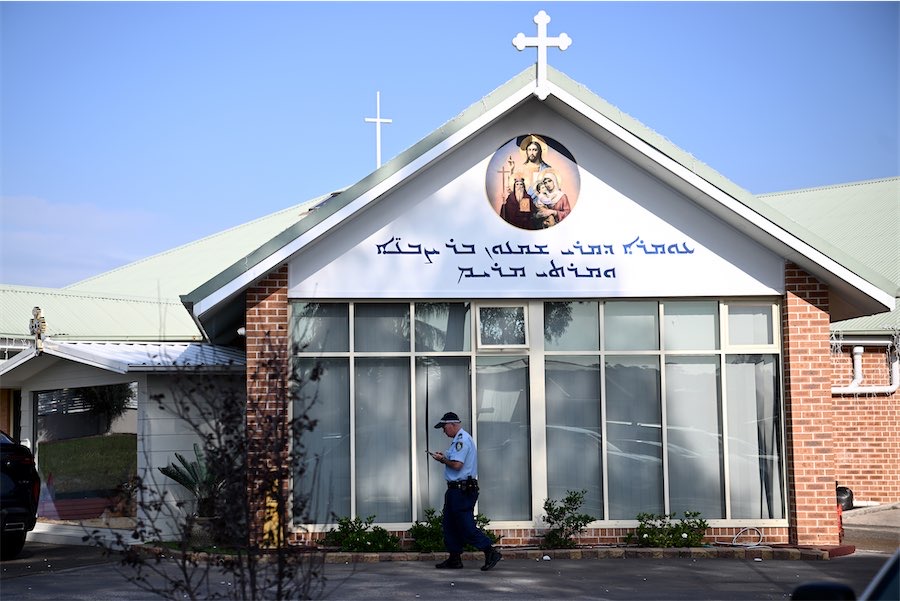ROOTY Hill seemed a long distance away when Prime Minister Julia Gillard turned up at the National Portrait Gallery on Friday to announce that 22-year-old Melbourne photographer Janelle Low had won the $25,000 National Photographic Portrait Prize.

The reaction was just as enthusiastic when she paid tribute to “my partner Tim [Mathieson] who, as First Bloke relishes his role as Chief Patron of the National Portrait Gallery.”
Mr Mathieson was keen to point out that the Prime Minister was on his turf this time round, telling those present that he was a frequent visitor to the gallery.
Ms Gillard’s arrival was a feather in cap of the gallery, which she described as “our nation’s youngest, but already one of its best-loved, cultural institutions,” and director Doyle lost no time pointing out that by July the National Portrait Gallery would join its fellow national collecting institutions in becoming a statutory body.
What was remarkable to assembled members of the visual arts community was not just that the Prime Minister had made a rare appearance at an arts event but that, just days before Federal Arts Minister Simon Crean stuff would announce the Government’s new national arts policy, the first since Paul Keating’s “Creative Nation”, she should choose to make a substantial speech on an art form.
The text of that speech is below:
“Portraits speak to us across centuries and cultures. The mouths on these walls may be silent, but they are eloquent nevertheless. Their eyes seek ours. Their stories help make up our rich and complex national narrative.
One of our own best-loved artists, Tom Roberts, recognised the need for a national portrait collection, back in the earliest days of the Federation. Sometimes, these debates take time. This one certainly did. As a nation it took us almost a century to recognise the need and the potential of such a place as this.
Already in its short life, this gallery has welcomed more than 1.5 million visitors. An astonishing result, and proof of the enduring appeal of portraits as an art form. The scholars might debate amongst themselves whether those 1.5 million visitors have come here for the art, or for the history.
Has it been to put faces to names? Or has it perhaps been the other way around? Perhaps it is a bit of both, and something more. As we are reminded by the wonderful portraits that make up this year’s National Photographic Portrait Prize exhibition, portraiture is not just about creating a documentary record.
It isn’t just about preserving for posterity the faces of the mighty and the notorious, accompanied by the symbols of their power. Sovereigns with their crowns. Explorers with their globes and instruments. The artist at his easel. But nor is portraiture exclusively about the craft or the genius of the artist. It is about people. Two people. The artist and the sitter. The photographer behind the lens and the subject in front of the lens. And the small glimpse into a life story which they create together.
Samuel Butler believed that the result of this story-making was in many ways more a portrait of the painter, than the sitter. Henri Cartier-Bresson summed up the intimacy of the relationship somewhat differently. “You have to try and put your camera between the skin of a person and his shirt,” he said. Perhaps it is that element of intimacy – between the artist, the subject and the ultimate viewer – that gets to the heart of why we love portraiture so much.
A portrait is a chance to gaze, uninterrupted and un-observed, at another human face, captured and rendered by an artist’s eye. Some of the portraits we will turn our gaze upon in this year’s exhibition are of individuals well-known to us. Other faces from this exhibition may only ever be known to us from the brief encounter we have with them this evening. But the memory of that encounter may persist for a lifetime.
We can all think of photographic portraits that have become a part of our cultural vocabulary. Annie Leibovitz’s 1980 ‘Rolling Stone’ cover of John Lennon embracing his muse, Yoko Ono. Or the iconic photo of Paul Keating on the cover of ‘Rolling Stone’ magazine.
But portraits of those whose names we do not know can also haunt us. Like Steve McCurry’s famous 1985 National Geographic portrait of a green-eyed Afghan girl.
Perhaps among the portraits here tonight are faces that will become part of our lives in the same way. The calibre of entries is, as always, outstanding. This year’s competition attracted 1220 entries, of which 53 have been selected for exhibit. But many of the names are new – testimony to the strength and of photographic practice in Australia today. Indeed, in just a few years, the National Photographic Portrait Prize has earned a place among the most hotly-contested art prizes in the country. And, of course, the fact that the works here tonight will later tour to 21 regional centres…a reminder that this prize – and this gallery – belong to all Australians.”
Who can be trusted?
In a world of spin and confusion, there’s never been a more important time to support independent journalism in Canberra.
If you trust our work online and want to enforce the power of independent voices, I invite you to make a small contribution.
Every dollar of support is invested back into our journalism to help keep citynews.com.au strong and free.
Thank you,
Ian Meikle, editor




Leave a Reply